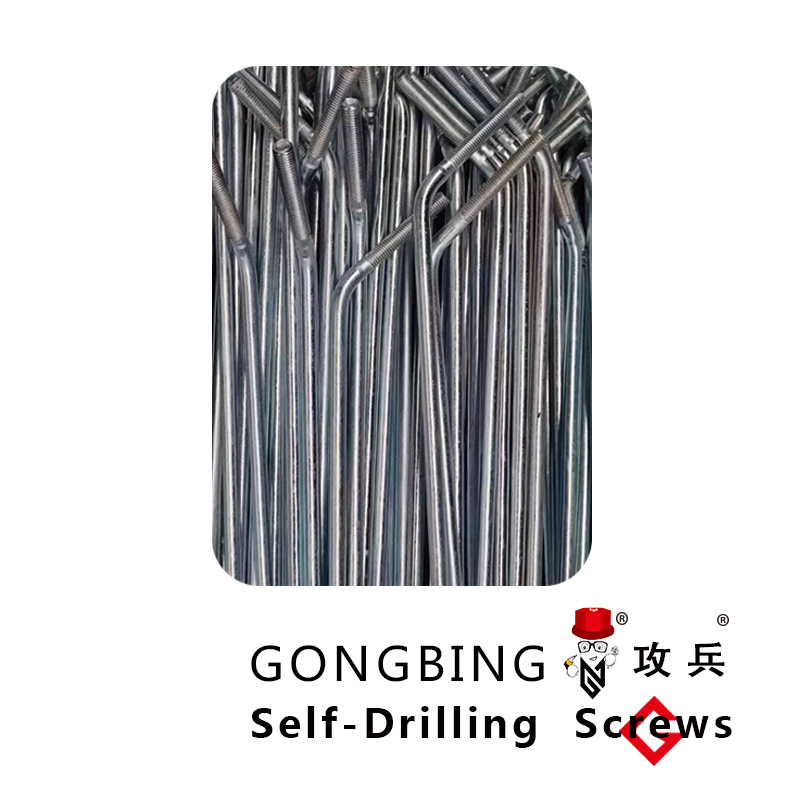tap end stud dimensions
Understanding Tap End Stud Dimensions A Comprehensive Guide
Tap end studs play a crucial role in various engineering and construction applications, particularly in the fields of automotive, aerospace, and general manufacturing. These fasteners are instrumental in creating robust connections that can withstand significant loads and stress. This article will delve into the dimensions of tap end studs, highlighting their specifications, types, and importance in facilitating reliable mechanical assemblies.
What are Tap End Studs?
Tap end studs are specialized fasteners designed for use in applications where a nut is typically attached. Unlike standard bolts that have threads along their entire length, tap end studs have threaded ends at both sides, while the middle section may be unthreaded. This design allows for easy installation into a tapped hole with the stud extending outwards to allow for a nut or other hardware to be fastened on the protruding end.
Key Dimensions of Tap End Studs
The dimensions of tap end studs are essential for their functionality and compatibility with other components. These dimensions typically include
1. Length The overall length of the stud is critical as it determines how deep the stud can be installed and how much of it will remain exposed for attaching nuts or other components.
2. Thread Diameter This is the diameter of the threaded portion of the stud, which is crucial for ensuring proper fit with nuts and tapped holes. Common thread diameters include sizes ranging from M3 to M30 (metric) or 1/4 to 1 (imperial).
3. Thread Pitch The thread pitch refers to the distance between threads, which affects the engagement and strength of the connection. It is expressed in millimeters (for metric threads) or threads per inch (for imperial threads).
4. Head Options Some tap end studs come with various head types that can assist in installation or provide additional functionality. Common head types include hex heads, round heads, or custom shapes tailored to specific applications.
5. Material The material of the stud is also a critical factor which influences its strength and corrosion resistance. Common materials include carbon steel, stainless steel, and various alloys.
6. Coating The finish or coating of the studs can enhance their resistance to environmental factors. Options like zinc plating, black oxide, or anodizing are prevalent to ensure longevity.
tap end stud dimensions

Types of Tap End Studs
The type of tap end stud used can vary based on the specific requirements of the application. Two common types include
1. Full Threaded Studs These studs have threads running the whole length, making them versatile for a range of installations where the depth of engagement matters.
2. Partially Threaded Studs As mentioned earlier, these studs have a section of unthreaded material between the two threaded ends. This can be beneficial in applications requiring alignment or load distribution across the unthreaded section.
Importance in Engineering Applications
The correct dimensions of tap end studs are essential for the integrity and performance of mechanical assemblies. A poorly fitted stud can lead to equipment failure, assembly issues, or even safety hazards. The following areas highlight the importance of correctly dimensioned tap end studs
- Load Bearing The ability of a tap end stud to bear load depends on its dimensions, material, and the type of threads used. A correctly sized stud ensures that loads are distributed evenly, minimizing the risk of failure.
- Ease of Assembly Proper dimensions facilitate easier installation, reducing the risk of cross-threading or misalignment, ultimately saving time and reducing labor costs.
- Compatibility Having the right dimensions ensures compatibility with existing components, preventing the need for modifications and enhancing overall efficiency in the manufacturing process.
Conclusion
Understanding the dimensions and specifications of tap end studs is crucial for engineers, manufacturers, and technicians involved in mechanical assembly and construction. By focusing on important factors such as length, thread diameter, pitch, material, and coating, professionals can choose the right tap end studs for their specific applications, ensuring durability and effectiveness in their projects. As industries continue to evolve, the demand for high-quality, precisely engineered fasteners like tap end studs will remain a cornerstone for successful mechanical assemblies.
-
Weatherproof Plastic Expansion Anchors for OutdoorМэдээJun.06,2025
-
Sustainability in the Supply Chain: Eco-Friendly TEK Screws ProductionМэдээJun.06,2025
-
Load-Bearing Capacity of External Insulation FixingsМэдээJun.06,2025
-
Double Head Bolts: Enhancing Efficiency in Industrial MachineryМэдээJun.06,2025
-
Corrosion Resistance in Chipboard Screws: Coatings for Wholesale DurabilityМэдээJun.06,2025
-
Butterfly Toggle Bolts : Enhancing Structural ResilienceМэдээJun.06,2025
